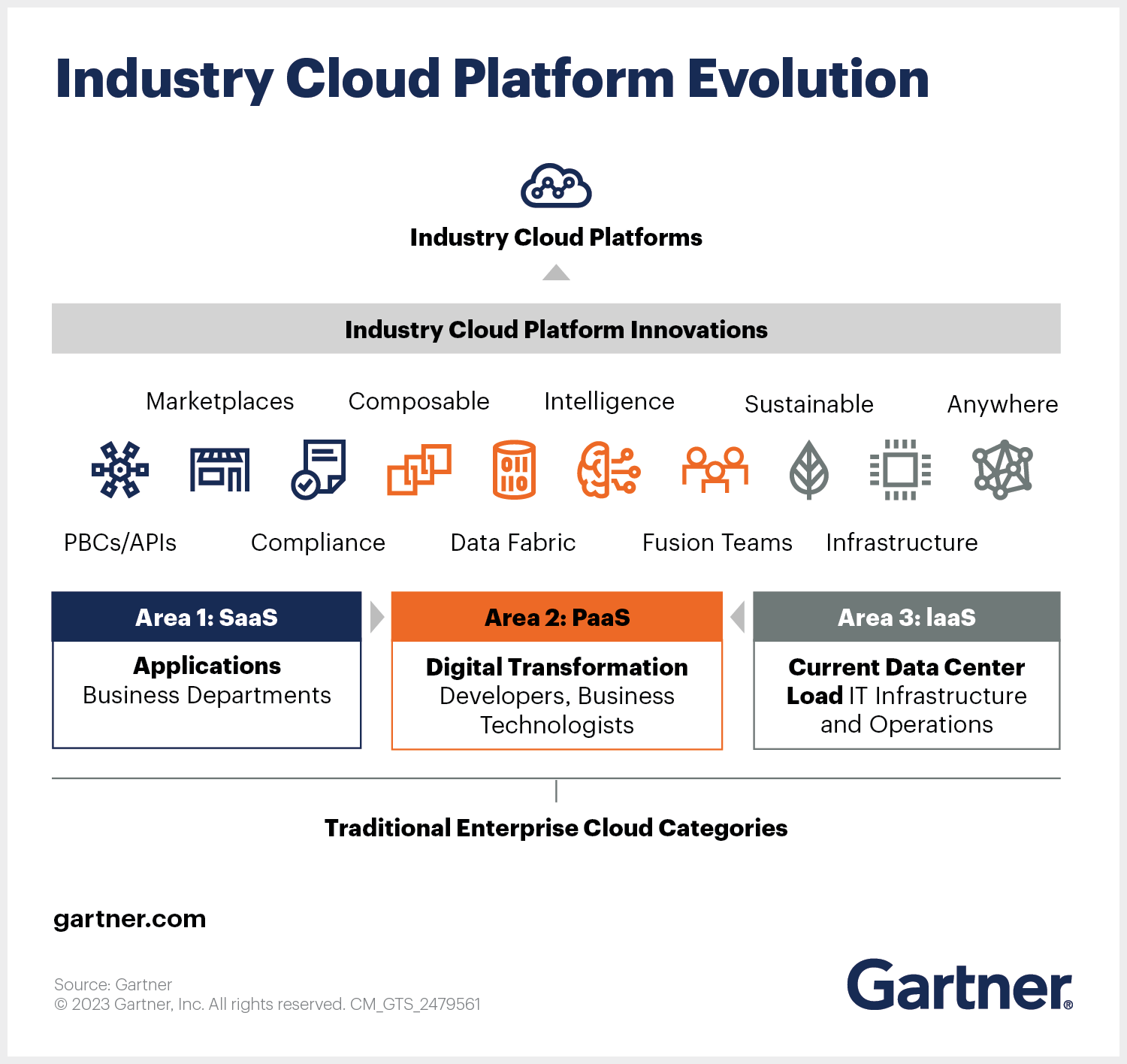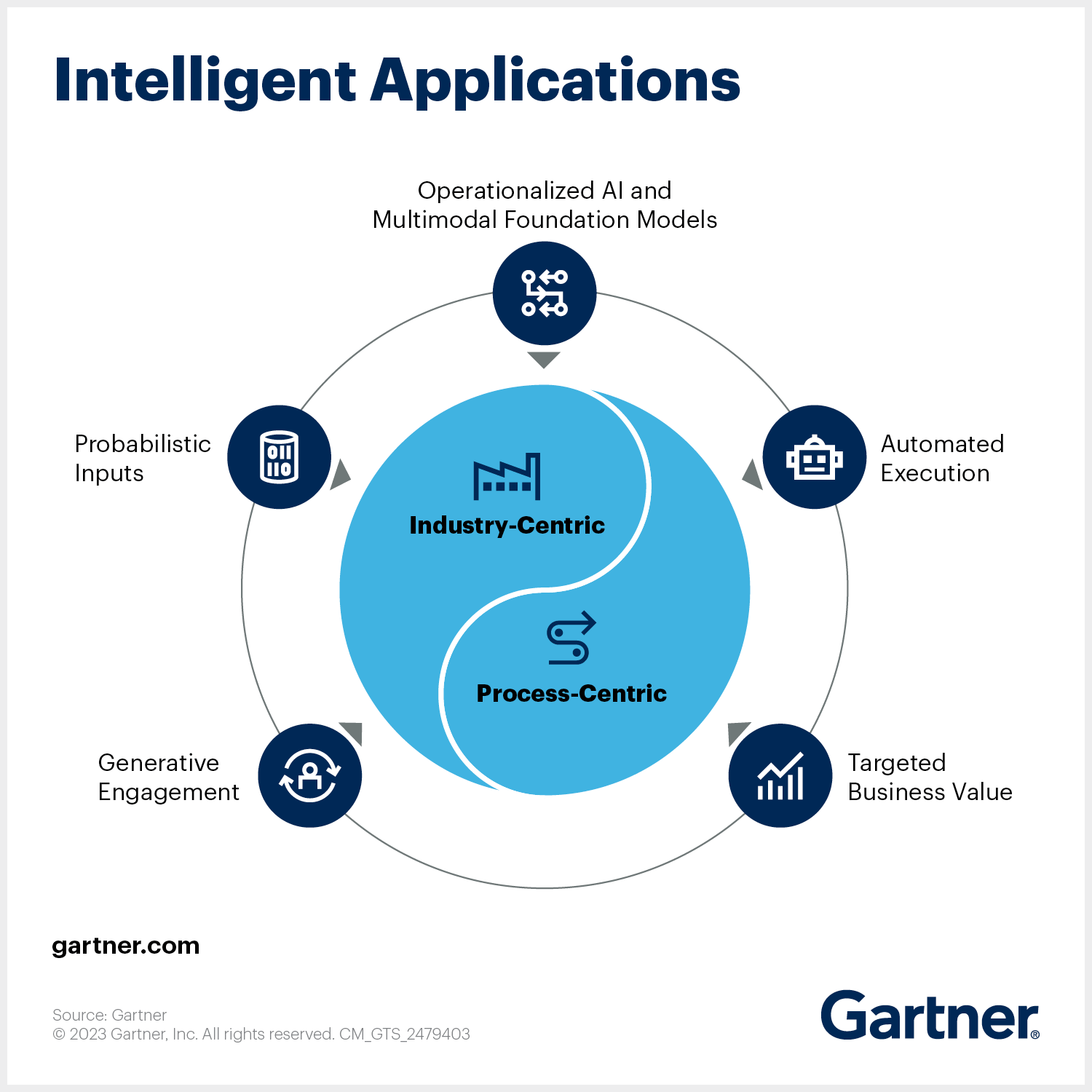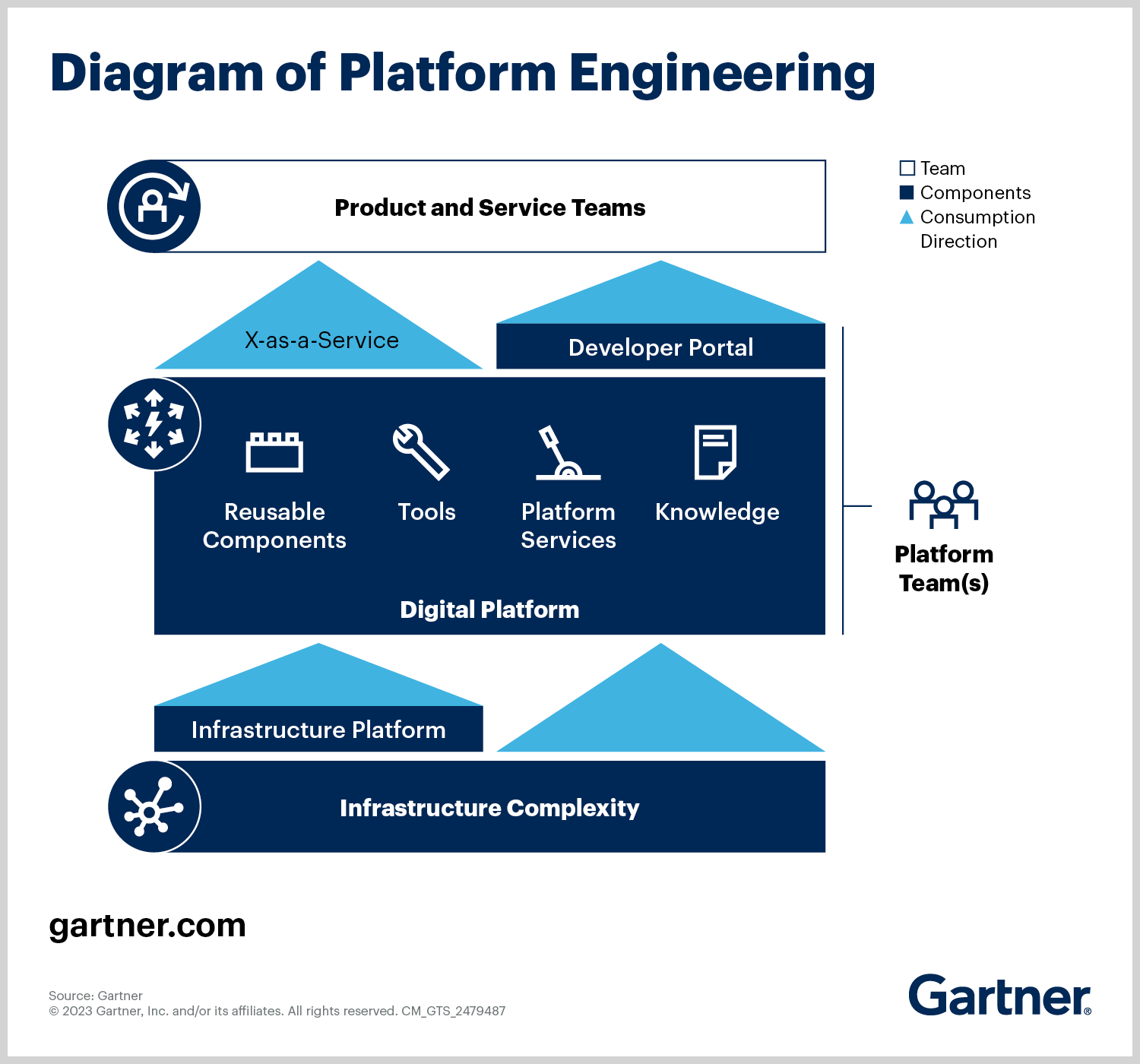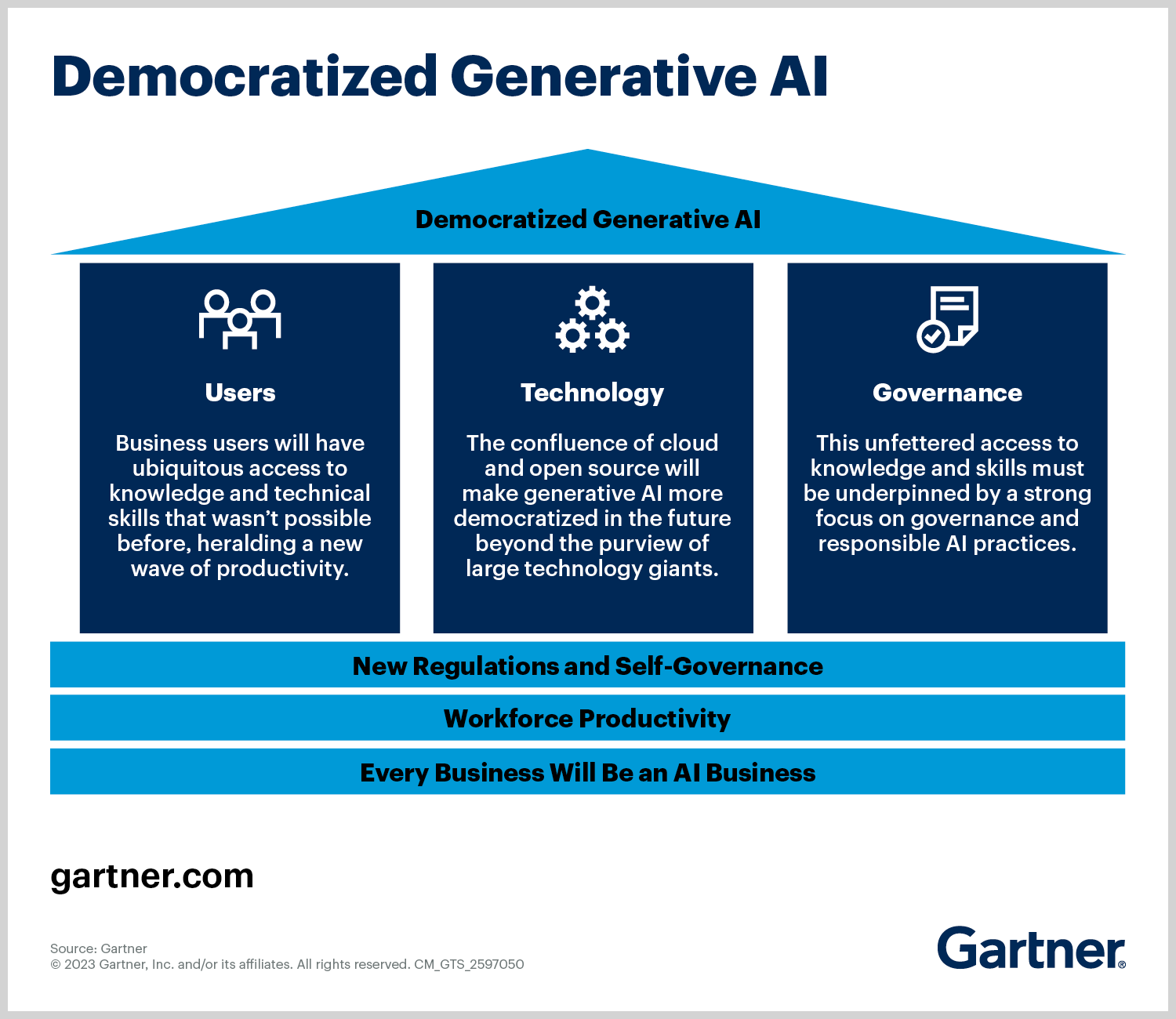
Gartner: AI Ambition & Readiness Must Be Top Priority for CIOs in 2024-25
According to Mary Mesaglio, Distinguished VP Analyst at Gartner, generative AI “is not just a technology or a business trend. It is a profound shift in how humans and machines interact.” In the same report, Gabriela Vogel, Sr Director Analyst, concurred: “Gartner predicts that by 2025, GenAI will be a workforce partner for 90% of companies worldwide.”
But there are better and worse ways to harness generative AI. Those who adopt game-changing strategies—as opposed to everyday, incremental change—will be well-positioned to succeed over the next 12-24 months.
This article will walk through five of the 10 top technology trends put forward by Gartner for 2024, and demonstrate how 3Pillar Global can help your information services company capitalize on them in the coming year.
Understanding the different approaches to generative AI
According to a recent Gartner report, generative AI falls into two categories: everyday and game-changing:
- Everyday AI focuses on improving productivity, enabling workers to perform existing tasks faster and more efficiently. This is the primary area of investment for most businesses, and it drives incremental improvement along the margins.
- Game-changing AI focuses on creativity. It doesn’t just make people faster or better, but instead creates new results or new ways to create results. This use case is transformational, and has the potential to disrupt business models and industries.
Everyday AI is quickly becoming table stakes, and won’t be a source of competitive advantage. Game-changing AI, on the other hand, is on the cusp of delivering breakthrough innovation for bold and imaginative leaders.
Which means, as an information services business, if you’re looking for the best and fastest way to gain a competitive edge, you need to invest in game-changing AI. This requires an in-depth understanding of customer needs and demand for AI-powered solutions, and the courage and creativity to explore the art of the possible.
Trend #1: AI readiness
Adopting generative AI depends on the readiness of the organization intending to implement it. According to Gartner, such readiness falls into three categories:
- Organization and values. The organization’s values must be the guiding principle that drives the interaction of humans and machines. There are many unknowns in this uncharted territory, and it’s important you understand what you’ll accept and, perhaps more importantly, what you won’t accept.
- Data. For data to be AI-ready, it must meet five criteria: secure, enriched, fair, accurate and is governed by your values. We’ll discuss AI-ready data more below.
- Security. The dark side of AI is that for all its benefits, there will be someone out there putting that technology to negative use. This means that organizations should prepare for new attack vectors and carefully develop policies that ensure the security of both the organization and your customer base.
Organization and values
Technology is not value-neutral. Every action you take with it is oriented toward some kind of outcome for your customers and your business—customer centricity, for example.
The stronger you hold customer centricity as a core value, the better decisions you’ll make. It will urge you to create better products, be more protective of customer data, and use AI not to needlessly disrupt their experience, but enhance the value you offer.
What’s more, you’ll need people inside your organization who are able to operationalize these values. Just because you say the right things on paper doesn’t mean you’ll be able to abide by them—incompetence is just as deadly to businesses as ill intent.
We’ve mapped out five core personnel competencies that every organization should have in-house:
- User Research Experts
- AI Product Designer
- AI Product Manager
- AI / ML Engineers
- Data Scientists
AI-ready data
AI rises or falls depending on the data used to build and train it. To avoid poor performance, your data should be ready for consumption in AI models, machine learning, and LLMs. Making data AI-ready extends its lifecycle beyond that of traditional pipelines.
Because building an LLM prototype can be relatively inexpensive, it’s often attractive to build proofs of concept (POCs) for GenAI capabilities. However, building such models at an enterprise level, powered by AI-ready data, is a different story entirely.
To scale and productize generative AI, your data must be modeled to be usable and consumable. Targeted outcomes and considerations include improved accuracy, minimized API calls, and mitigation of hallucinations. This requires a concerted effort toward data labeling, enrichment, and bias mitigation.
The foundation of AI-readiness is democratized access to data prepared for consumption. This is why 3Pillar advocates having a unified data store, in the cloud, making your data available to your AI models. Essentially, you’re centralizing data, while balancing accessibility and security, preparing data for consumption, and ensuring the right velocity of data for product innovation, insights generation, and advanced analytics. Fortunately, data architecture has evolved over time to meet the requirements of AI and augmented analysis.
Conversely, companies with siloed data, duplicate technology stacks, and gaps in capabilities along the data lifecycle may struggle to adopt generative AI for game-changing use cases.
Security
By 2026, organizations that operationalize artificial intelligence (AI) transparency, trust and security will see their AI models achieve a 50% improvement in terms of adoption, business goals and user acceptance, according to Gartner.
But productizing transparency, trust, and security is difficult. In addition to having the right personnel on your side, proper machine learning operations (MLOps) processes can help ensure that data ingest, prep, model training, tuning, deployment, and monitoring are all conducted according to the highest standards of security and safety.
Because AI models require regulatory scrutiny and drift-check, MLOps can ensure faster response to issues—fixing them before they balloon into much larger problems.
How 3Pillar can help:
Trend #2: Industry cloud platforms (ICPs)
Industry cloud platforms (ICPs) combine software (SaaS), platform (PaaS), and infrastructure as a service (IaaS) capabilities to provide industry-specific solutions. Although based on public cloud services, ICPs offer industry players a more agile way to manage workloads and accelerate change in ways responsive to their unique industry and business needs.
ICPs enable organizations to move faster with a data fabric approach—democratizing access to AI-ready data for modeling and productization—and a library of packaged business capabilities (PBCs).
Think of PBCs as LEGO building blocks, software components that are “ready for use” by your product innovation teams. PBCs can make core value-added services—your sources of competitive advantage—available for rapid software development so development teams don’t need to start from scratch. Ultimately, this composability helps your teams accelerate innovation while improving quality and consistency.
For generative AI specifically, a data fabric design pattern, democratizing access to AI-ready data, combined with PBCs empowers teams to develop AI-enabled products faster within a context relevant to your industry.
How 3Pillar can help:
Trend #3: Intelligent applications
According to Gartner, by 2026, 30% of new applications will use AI to drive personalized adaptive user interfaces, up from less than 5% today. This is one of many statistics signaling the importance of intelligent applications, now and in the future.
Intelligent applications are those augmented with AI, infused with data from transactions and external sources. Rather than serve as static waystations for users and customers to perform core functionality, they learn from interactions and improve autonomous responses over time.
Most applications today are built on some form of rule-based, conditional logic preset by the developer or engineer. While these approaches can be highly sophisticated, at the end of the day they’re still predetermined and do not change without human input. Intelligent applications take a different approach, deploying machine learning to elicit the appropriate response across a broader range of circumstances, including those that have not been pre-programmed in advance.
It’s easy to see how intelligent applications can be transformational for user experiences. Some benefits include:
- Adaptive experiences, like digital assistants and natural language interfaces, to discover, learn about, and respond to user needs
- Augmenting processes to drive dynamic business transformation
- Enabling a continuous connection between analytics and decision making

How 3Pillar can help:
Trend #4: Platform engineering
The vast majority of technological development conversations involve front-facing platforms that serve consumers and business users. Platform engineering serves the other side of the table, providing reusable tools and self-service capabilities for developers and engineers.
Platform engineering can improve consistency, productivity, and the overall development experience. By 2026, 80% of large software engineering organizations will establish platform engineering teams as internal providers of reusable services, components and tools for application delivery.
The integration of generative AI and platform engineering is still new. Generative AI can already automate routine tasks such as managing merge and code changes, testing software, and managing security. Over time, AI should be able to provide more creative and unique engineering solutions, transforming the work processes of developers and engineers.
How 3Pillar can help:
Trend #5: Democratized generative AI
Because generative AI doesn’t require a deep bench of skill sets in order to operate, it has the potential to level the playing field in access to skills, innovation, and capabilities:
- Rapid ideation and faster time to market for new products
- Increased information and insight accessibility, enabling contextual search and transforming information retrieval
- Improved efficiency and increased business productivity by accelerating manual or repetitive tasks

The impact of democratized access to generative AI cannot be underestimated. On the one hand, it poses serious potential risk to existing business models and products. At the same time, if you can proactively transform your business model to respond to this changing landscape— understand the capabilities and limitations, and reimagine your products with game-changing innovation—you can be one of the few to exploit this rising tide, while your competitors will remain below water.
How 3Pillar can help:
Throughout this article, we’ve shared ways 3Pillar Global can help in these five areas. Click the links above to dive into more detail, and reach out to us when you’re ready to get started.
About the Author

Recent blog posts

Stay in Touch
Keep your competitive edge – subscribe to our newsletter for updates on emerging software engineering, data and AI, and cloud technology trends.



